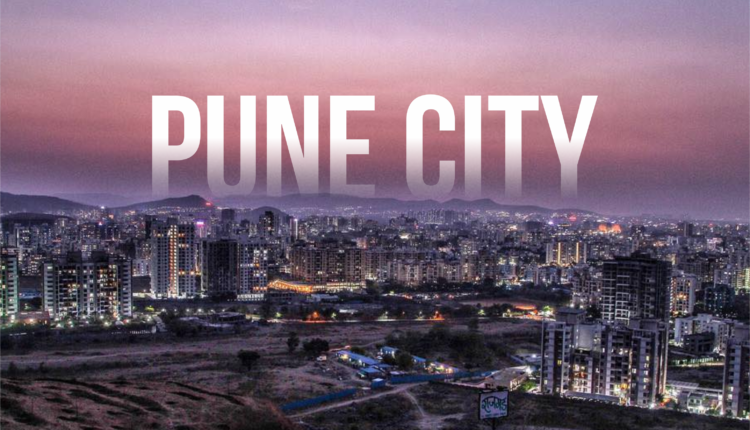It is the most popular among the thousands of deities that are housed in the lanes and bylanes of Pune city, including the big five Ganpatis that are considered of high honour during the annual festival. It is among the richest temples in the state and devotees believe its idol holds the power to fulfil their wishes.
The Dagadusheth Halwai Ganpati holds the rare distinction of being named after a devotee, its inceptor; but it wasn’t always called so. For many decades, the idol was referred to as the Bahuli Haudacha Ganpati as it was situated near the popular reservoir near Kotwal Chawdi in the old city area.
Dagadusheth Halwai and Laxmibai Halwai. Pune’s famous Laxmi Road is named after the latter.
Who was Dagadusheth Halwai?
Kisansheth Gadve was an immigrant from Karnataka who settled in Pune and became a prominent sweet seller – thus acquiring the family name of Halwai. He was an aficionado of mud wrestling, a popular sport at the time. When he had a son, Dagadu, the businessman pushed him to train in wrestling. Dagadu went to train with Jagobadada Vastad, a prominent pahalwan of that time, and became a wrestler of considerable repute, bouting with Punjiram Kachi and Jangali Maharaj. He also took over the father’s business and by the last decade of the 19th century, he was a big name in trade in Pune city. The British honoured him with the title of ‘Nagarsheth’ – someone symbolically heading the trading and money lending industry. The Halwai family stayed in a building in Budhwar Peth which is now the Dutta Mandir.
When Bal Gangadhar Tilak, among the first leaders of the Indian Independence movement, called upon people in 1893 to make Ganesh Chaturthi a public celebration, Dagadusheth was among the first respondents who participated in the public installation of the Ganesh idol. The first idol was made out of paper pulp. Later, a mud idol was made.
 A painting depicting an immersion procession of the Ganpati idol during the early days with Lokmanya Tilak, Bhausaheb Rangari and Dagadusheth Halwai leading the charge.
A painting depicting an immersion procession of the Ganpati idol during the early days with Lokmanya Tilak, Bhausaheb Rangari and Dagadusheth Halwai leading the charge.
As per the office bearers of the temple trust, in 1896-97 when the deadly plague hit the city, Dagadusheth lost his two sons to the disease. Shortly after, he too passed away, leaving behind his distraught wife Laxmi.
“Shattered by the sudden calamity, Laxmibai consulted the family’s spiritual guru Madhavnath Maharaj on the future course. The guru advised her to establish a Dutta idol and construct a temple. He told her to look after the new Dutta idol and the existing Ganesha as her own children and that they will continue the family’s name, like children do,” said Mahesh Suryavanshi, treasurer of Shreemant Dagadusheth Halwai Ganpati Trust.
Ganpati from Bahulicha Haud flourishes
The annual celebrations of the Ganpati – known as Bahulichya Haudacha Ganpati until the 1960s – were continued by an appointed ‘Panch Mandal’ from the neighbourhood long after Laxmibai died. In 1952, Suvarnayug Tarun Mandal, a youth organisation founded by Pratap Godse (whose father had previously served on the Panch Mandal), took control of the annual festival of the Ganpati and expanded it.
In 1968, a new idol was commissioned to mark the 75th anniversary of the Ganpati. A famous sculptor from Karnataka, Shree Shankar Appa Shilpi, designed the idol which now attracts thousands of devotees every day and lakhs during the festival days.
What sets Dagaduseth Ganpati apart from other temple trusts in Pune is that it has taken an active role in social life. It spends liberally on social issues that range from rural development, healthcare for the poor, helping small vendors, serving the elderly, providing support to depressed farmers and students, and brick kiln workers, to name a few. “We don’t compromise on our devotion a bit, but we also use the trust placed in us by devotees to contribute to society. That is what has set this small temple apart from bigger and older deities,” says Suryavanshi.
Contested history
The story of Laxmibai adopting the Dutta and Ganpati idols to continue her family name is contested by descendants of Govindsheth Halwai who, they claim, was adopted by Dagadusheth Halwai and his wife soon after their sons died due to illness.
As per the descendants, who continue to operate a small sweet shop in front of the magnificent temple on Shivaji Road, the family migrated from Uttar Pradesh and not from Karnataka as is often claimed. “Dagadusheth was a Shrivastava and not Gadve as is claimed. After his sons – one aged 13 and another 6 – died due to illness, he adopted his brother Bhausheth Halwai’s son Govind. We are his fourth generation and we continue his lineage by running the small sweet shop,” said Suresh Halwai.


